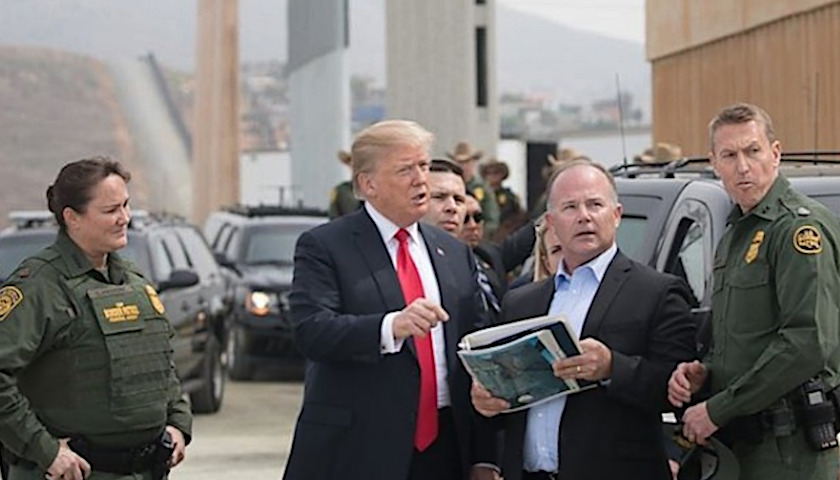by Robert Romano
“I’d like you to come back with a 5 percent cut. Get rid of the fat. Get rid of the waste, and I’m sure you can do it.”
That was President Donald Trump on Oct. 17 ordering his Cabinet secretaries to come up with plans to slash the federal budget. After a $779 billion deficit for Fiscal Year 2018 as the national debt has topped $21 trillion, something’s got to give.
More than half of the increase in the deficit, $65 billion, came as 10-year treasuries interest rates have jumped from 2.2 percent in Sept. 2017 to about 3.2 percent today.
In his prior budgets, Trump has called for $4.5 trillion of spending cuts, including repealing Obamacare.
Now that the military and law enforcement were taken care of in the budget, with major spending increases, Trump said it would free up Congress to be more aggressive in cutting spending elsewhere.
For this particular proposal, non-defense discretionary spending authority was about $572 billion for Fiscal Year 2018, according to the Office of Management and Budget.
So, 5 percent off the top would amount to about $28 billion a year of cuts.
Which raises the question, if the Trump administration can find $4.5 trillion of non-defense cuts, why can’t Congress?
So far, Congress has passed a full year’s funding for Defense and Health and Human Services, on top of Energy, Military Construction and Legislative Affairs that already passed and just continued appropriations at current levels until Dec. 7 for everything else.
That’s the bulk of non-defense spending right there, and it will all come up after the election during the lame duck.
And as Conservative Partnership Institute senior director of communications Wesley Denton told Americans for Limited Government President Rick Manning in an exclusive interview that aired on Conservative Commandos, that will also include funding for the southern border wall.
“Kevin McCarthy recently introduced a bill to fully fund the wall during the lame duck session. Now it’s not now attached to an appropriations bill which is what will have to be [done],” Denton noted. “A stand alone bill won’t really get the job done.”
Denton added, “After the midterms, the 2020 cycle is on in full force, and so to a large degree what Donald Trump wants becomes the agenda of the Republican Party… The President’s top priorities that their staff have been saying is we want to fully fund the wall, we want real money for the wall, and we want to reduce overall spending.”
https://youtu.be/xQDE-nFw_X8
Well, with $28 billion of non-defense cuts — more than enough to pay for the wall — and with the migrant caravan closing in on the southern border highlighting the problem, perhaps Congress will be able to finally get that done. To expedite the process, Denton suggested that Congress work on the spending bills after the November midterms prior to any leadership elections.
“We know that this is important, they want to show people they can get this done, but usually the Speaker’s race is internally held as a conference vote immediately after the election in the first… or second week after the election in November. They shouldn’t do that. They should finish the appropriations process, fund the wall, and… we can base their success or failure and then vote for Speaker,” Denton said.
Emphasizing the importance of the wall, Denton said, “the candidates that run for Speaker, they need to show that they can get the job done before they vote.”
Not a bad idea. Before we reward any Congressional Republicans with new leadership roles, with House Speaker Paul Ryan retiring, they need to show to can keep their promises. They promised they would give President Trump the funding for the wall, so where is it? Maybe try cutting some unnecessary spending, and they’ll find the money.
– – –
Robert Romano is the Vice President of Public Policy for Americans for Limited Government.




